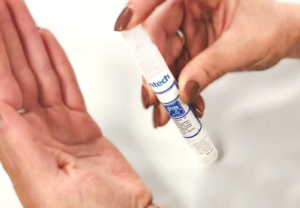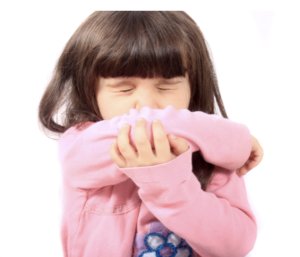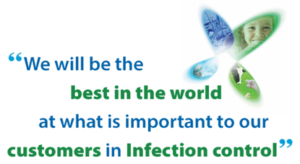A Collective Responsibility
The healthcare environment, while a place of healing, is paradoxically susceptible to the spread of pathogens. As we’ve seen during the COVID-19 pandemic, even the most advanced healthcare systems can be challenged by HAIs (Healthcare-associated infections). Whether you’re a patient, healthcare worker, or visitor, it’s crucial to recognize the role you play in breaking the chain of infection. In this blog, we’ll explore practical measures individuals can take when attending a healthcare facility to help reduce the spread of pathogens, protecting not only themselves but also the larger community.
If you would like to find out more about how people receiving medical care can acquire a HAI and how healthcare facilities identify resistant pathogens, click the following link: https://www.cdc.gov/drugresistance/microbial-ecology/decolonization.html
Adherence to Infection Prevention Guidelines: Every healthcare facility operates under a set of infection prevention guidelines, which are based on evidence and best practices. Familiarize yourself with these protocols before your visit. They often include mandates like wearing masks, using hand sanitizers, and following specific entry and exit protocols. By respecting these guidelines, you’re contributing to a safer environment for everyone.
Hand Hygiene: It might seem trivial, but hand hygiene is a powerful tool in controlling the spread of infection. Ensure you wash your hands thoroughly with soap and water for at least 20 seconds, especially after touching surfaces, before eating, and after using the restroom. If soap and water are not available, use a hand sanitizer with at least 60% alcohol. Healthcare facilities have hand hygiene stations; use them frequently.

Respiratory Etiquette: Respiratory infections are among the most common and easily spread in healthcare settings. Practice good respiratory etiquette by covering your mouth and nose with a tissue or elbow when coughing or sneezing. Dispose of tissues in a sealed bin and perform hand hygiene immediately after.
Honest Health Reporting: If you’re feeling unwell, especially with symptoms indicative of an infectious disease (fever, cough, difficulty breathing, etc.), stay at home if possible, or if not, report your symptoms honestly to healthcare providers. They may provide special instructions for your arrival to minimize the risk of transmission.
Appropriate Use of Personal Protective Equipment (PPE): In certain situations, healthcare facilities may require the use of PPE, such as masks, gloves, or face shields. Use these items as instructed, and educate yourself on the proper way to put them on, take them off, and dispose of them.
Visitor Limitations: Most healthcare facilities have visitor policies, especially during high-risk periods like flu season or a pandemic. Adhere to these policies, understand the necessity for limitations, and consider alternative ways to connect, such as virtual communication if you’re not permitted to visit in person.
Physical Distancing: When possible, maintain a safe distance from others in waiting rooms, elevators, and other common areas. Physical distancing continues to be an effective strategy in reducing the spread of pathogens.
Vaccination: Stay up-to-date with vaccinations, including the annual flu shot and other relevant vaccines (e.g., COVID-19, pneumonia). Vaccinations help protect you and those around you, especially the immunocompromised and the elderly, who are at a higher risk of severe infections.


Follow Facility-Specific Instructions: Be attentive to and follow any additional instructions provided by the healthcare facility. Guidance can change, especially during an active outbreak, so stay informed about the current protocols of the facility you’re attending.
Stay Informed: Lastly, staying informed about the ways pathogens spread and the latest public health guidance is key. Use information from reliable sources, such as government health departments or reputable health organizations, to guide your actions.
The responsibility of preventing the spread of pathogens in healthcare settings doesn’t lie with medical staff alone. As individuals, making informed and conscious decisions can significantly contribute to creating a safer healthcare environment for all. In the concerted effort to maintain a safe and hygienic environment within healthcare facilities, your conscientious adherence to infection prevention guidelines plays a pivotal role. Simultaneously, our range of products diligently complements your efforts by ensuring that every surface within healthcare settings is thoroughly disinfected.
Our scientifically formulated disinfectant tablets work tirelessly to eliminate pathogens, thereby reducing the risk of infection spread. They act as an invisible shield, safeguarding the health of both patients and healthcare professionals. With your vigilant compliance with health protocols and our products’ relentless effectiveness in maintaining surface hygiene, together, we create a safer, healthier environment for everyone in healthcare settings.
Remember, small actions can make a big difference in the collective effort to minimize the spread of infectious diseases. Let’s all commit to these practices and participate actively in safeguarding our healthcare communities.



